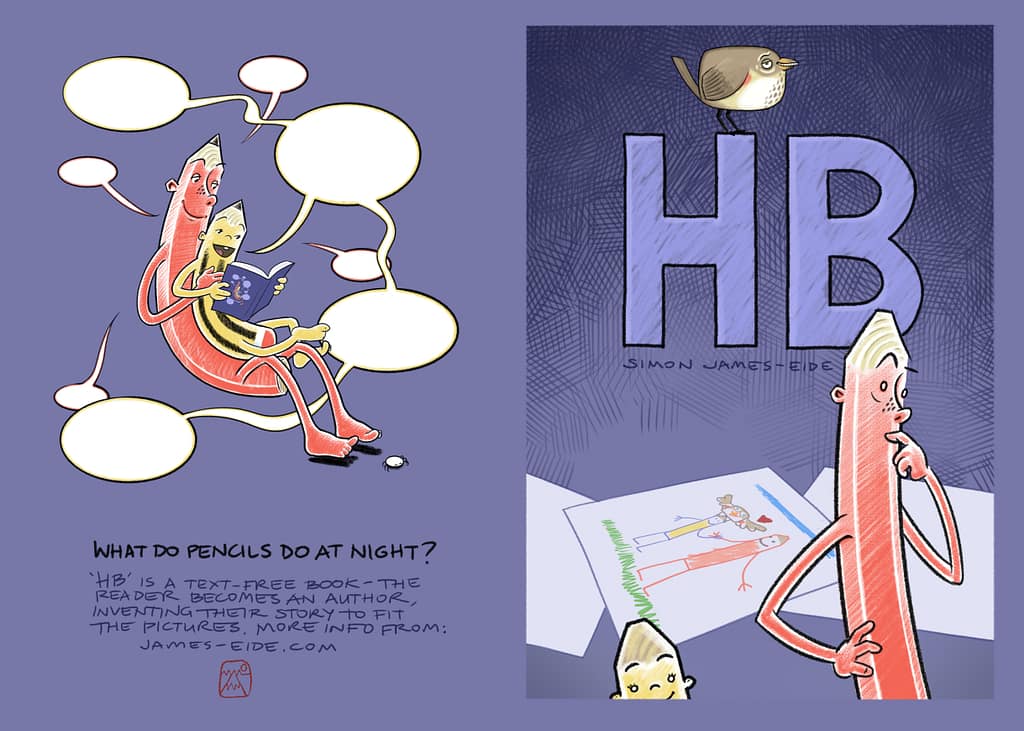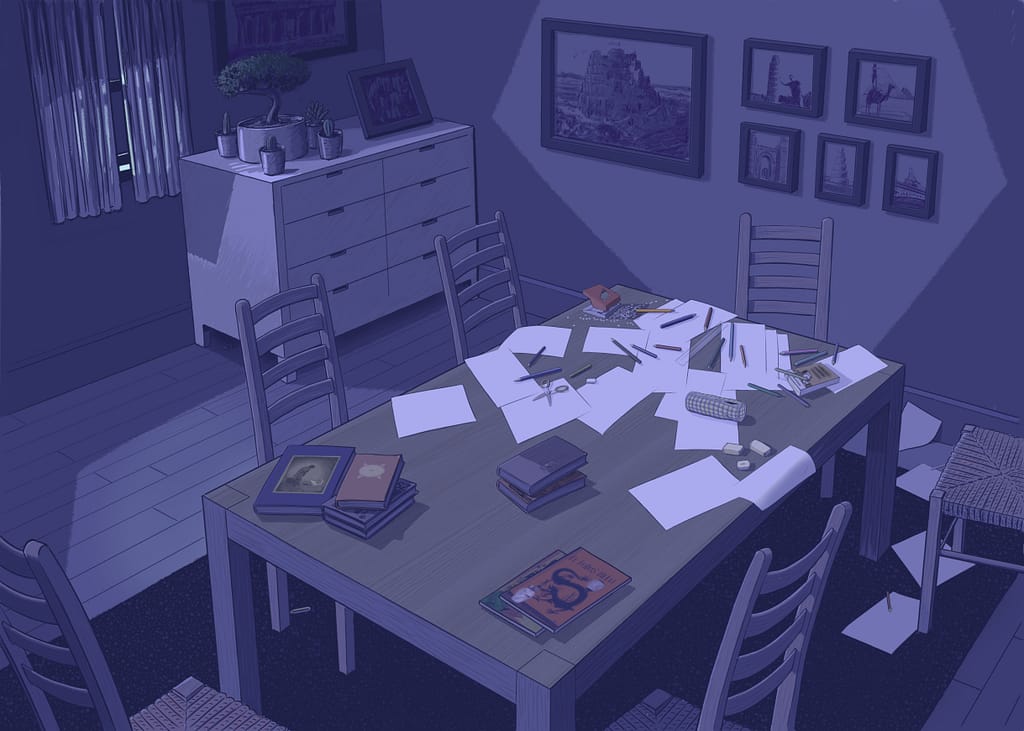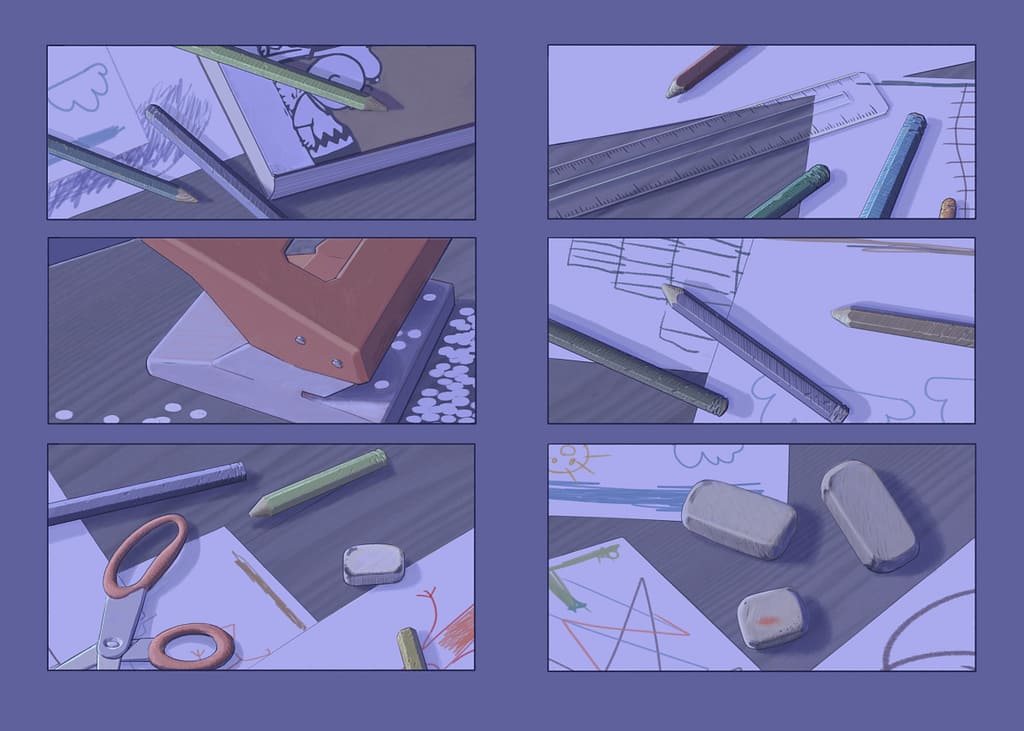














Why draw a book without text? Mastery, being heard and closeness
Mastery
When text and image have been combined in books it is often the text which has come first. The images tend to be made after and are often interchangeable. They are, generally, not an integral part of the text. There is a single written story – the text is given – and many possible images.
Rather than having a single given text with many possible images, HB follows the long, though not so common, tradition of text-free books where the images are the given whilst the text has many possibilities. By reading images rather than text, the ‘reader’ must uncover meaning, piece together a story and thus becomes an author.
We are visual beings. Children learn by watching and observing the world around them. Our ability as young children to understand and find meaning in visual information (facial expression, body language) develops far in advance of our ability to understand and find meaning in written text. Learning to read the symbolic language of written text can be a slow and frustrating process.
As I read illustrated books to my own children it was obvious that they were at least as interested in the images as in the text. As a primary school teacher, I experience that the reading abilities of my pupils vary considerably. By year 7 some pupils are way ahead of their peers – reading like tenth-graders, whilst some at least as many years behind in their development.
There is a theory which proposes that relatively small and insignificant events, early on in a process, can have enormous effects on outcomes. Chaos theory is its name, and I wonder whether it is possible to apply it to a child’s relation to reading. That small experiences of frustration about and lack of mastery of reading early in childhood can, over time, become significant barriers to the enjoyment of reading later in life.
So how about a book that anyone with decent vision can master? Could that be a useful tool for parents and educators who wish to motivate the young people in their care to enjoy books? Could a text-free book provide significant experiences (and memories) of success and pleasure connected to books, especially to those who struggle to decode text, early in the process of learning to read? Being able to read texts, acquire ideas, information, insights and inspiration, is a vital life-skill everyone should have the chance to develop fully.
Being heard and closeness
Even more important, however, is the need for children’s voices to be heard. For each child to have adults around them who have the time to listen, ask questions and understand what the child is thinking. This is the more principle aim of HB, as the illustration on the back of the book demonstrates.
Rather than the parent/carer/educator reading HB whilst the child listens, my intention is that these roles are reversed. So that the child reads whilst the adult listens. Preferably listening actively: by asking open questions which allow for the development of the story in the mind of the child. Short questions of the what, why, where, how kind, which lead to reflection. Words of encouragement, such as ‘go on’, or ‘tell me more’ are also useful. Listening adults may feel tempted to give their own interpretations, but these should be kept to an absolute minimum, perhaps as low as zero.
For educators concerned with the development of communications skills, the development of the ability to piece together visual clues into a coherent whole, the ability to imagine, are all significant outcomes. But I would argue that the social outcomes – the emotional bonds that can be made when an adult takes time to sit and listen to a child – are more valuable.
In order to get the feedback necessary to develop the images in HB I have listened actively to at least 20 people from the age of 4 to 74. Each has come up with very different interpretations. Their stories reflected their lives and experiences and gave me an opportunity to get closer to each of them. I invite you to try the same, and to let me know how it goes.
Simon James-Eide
Oslo March 2018